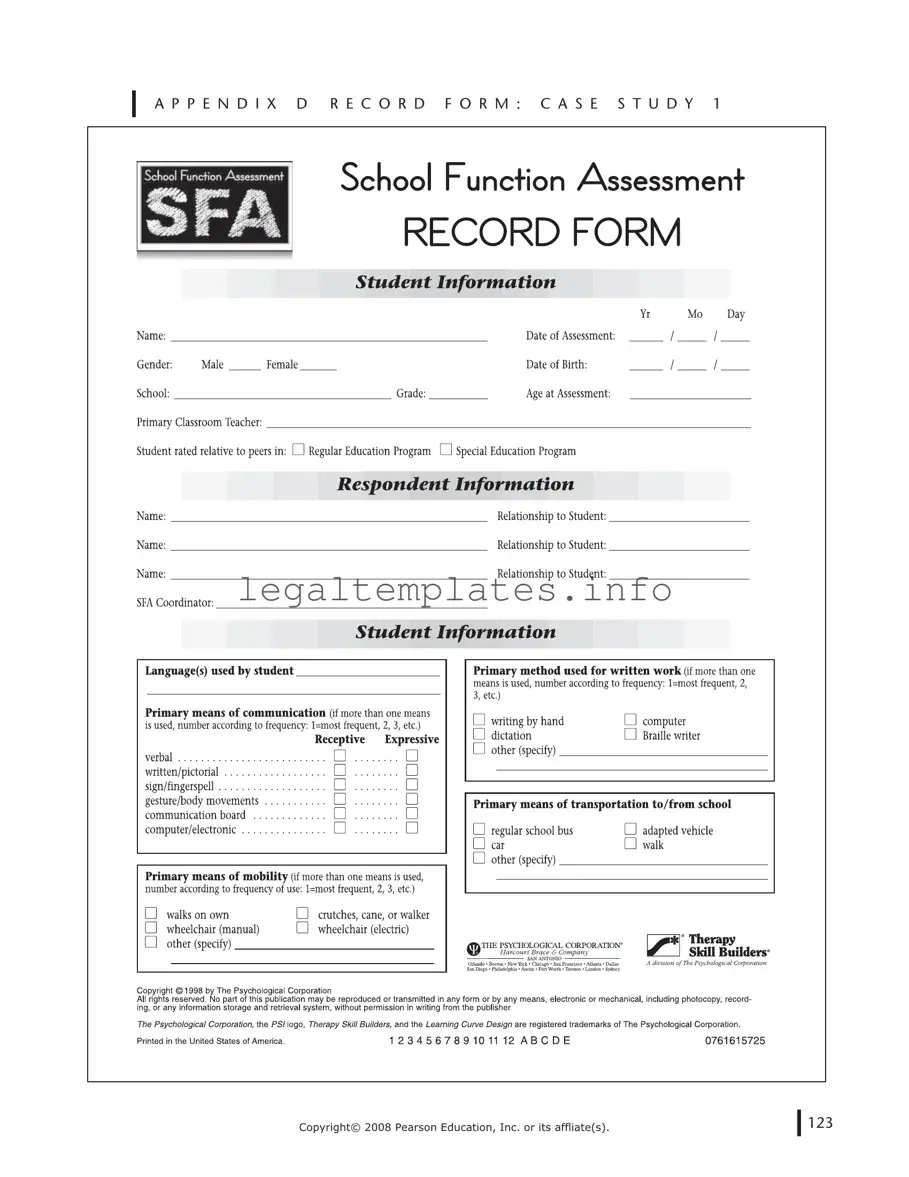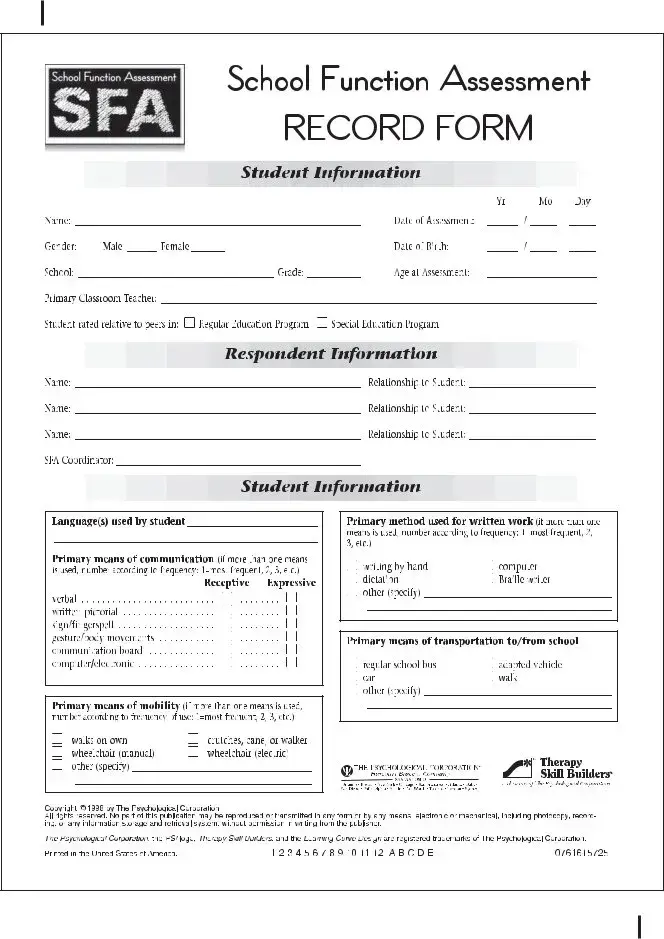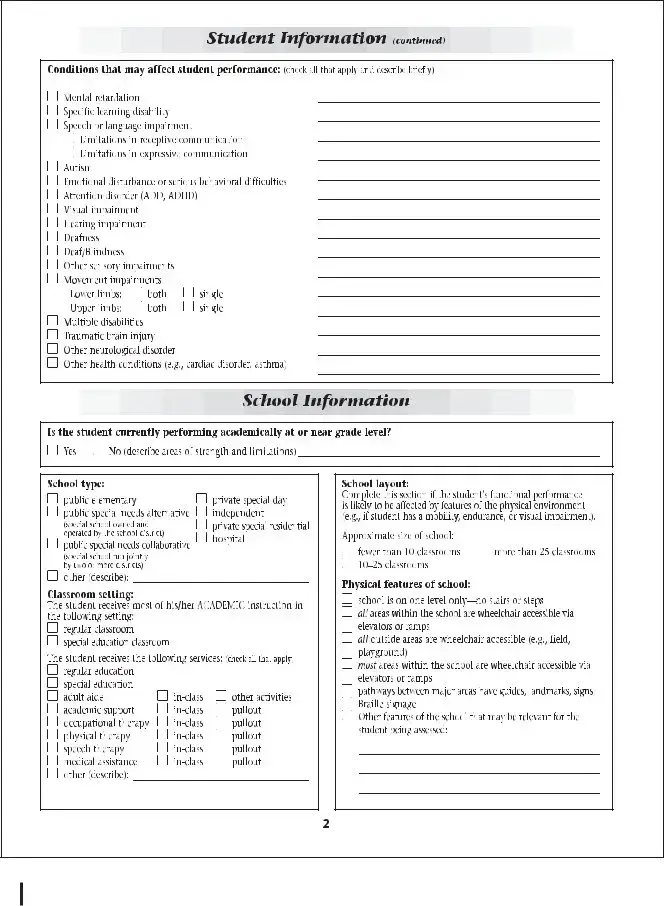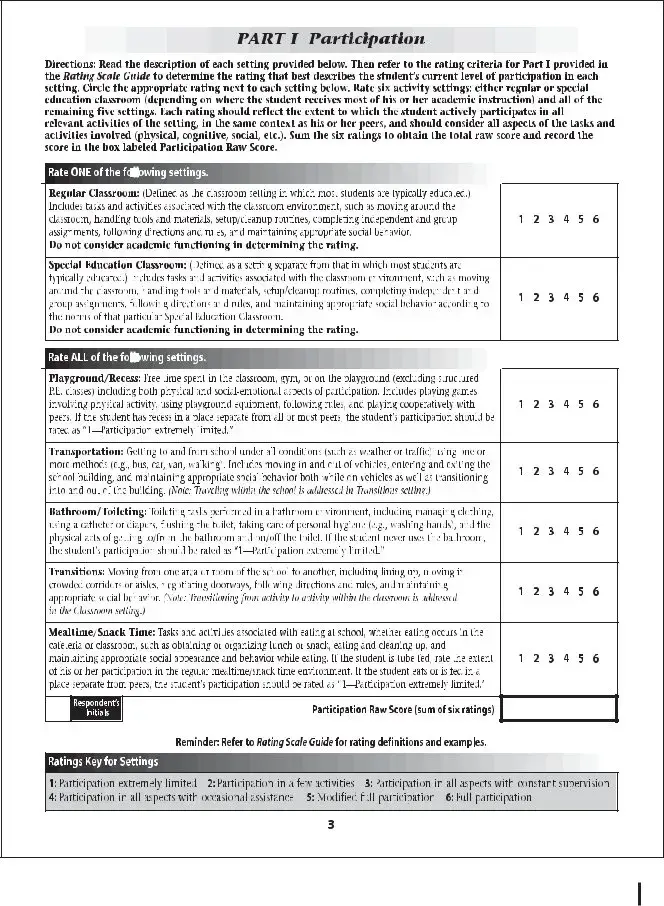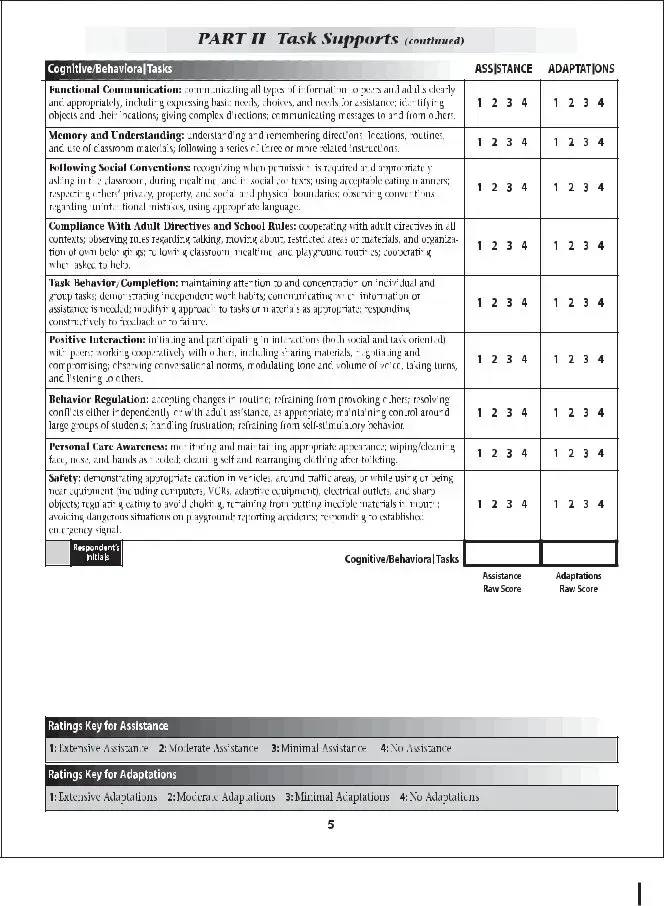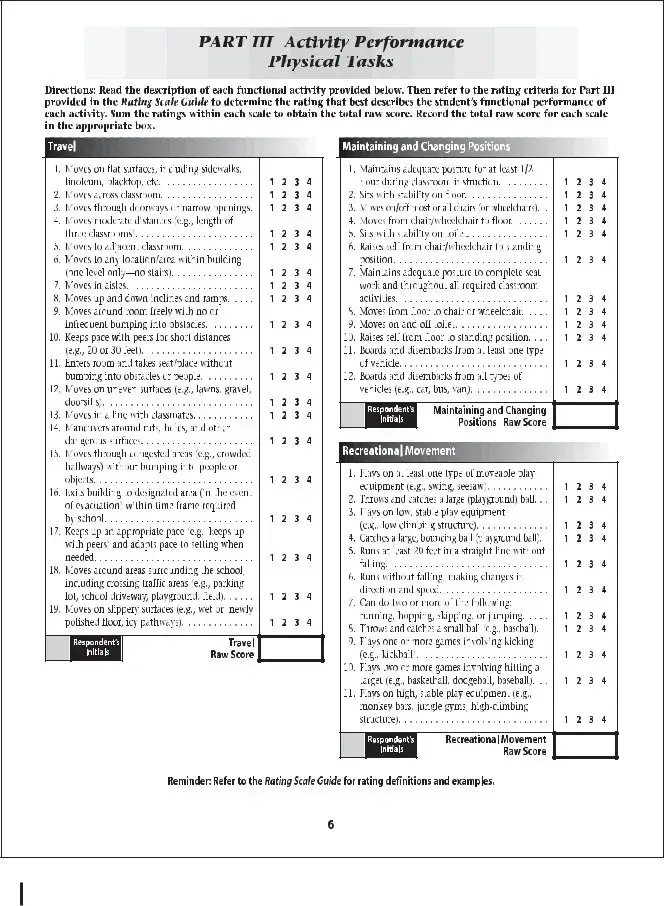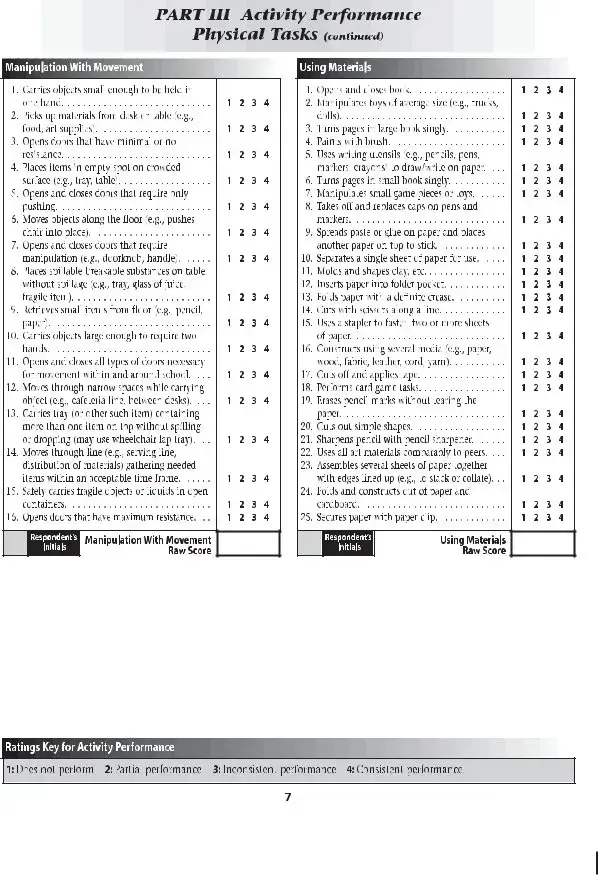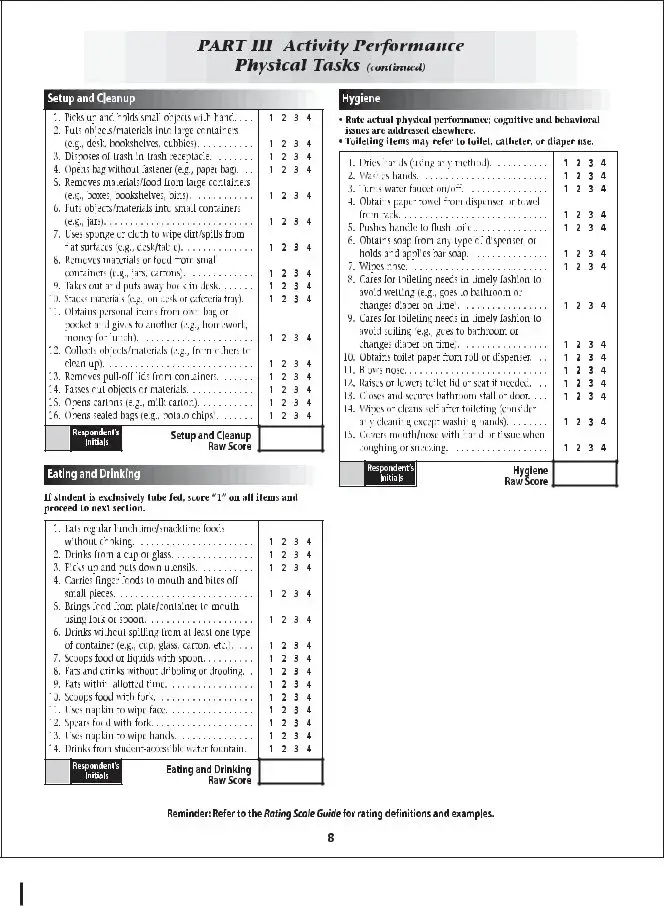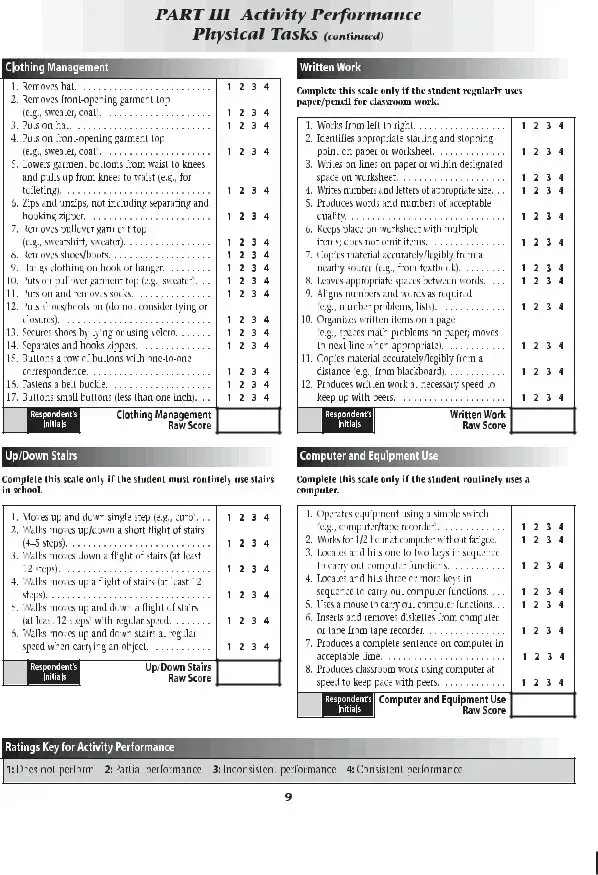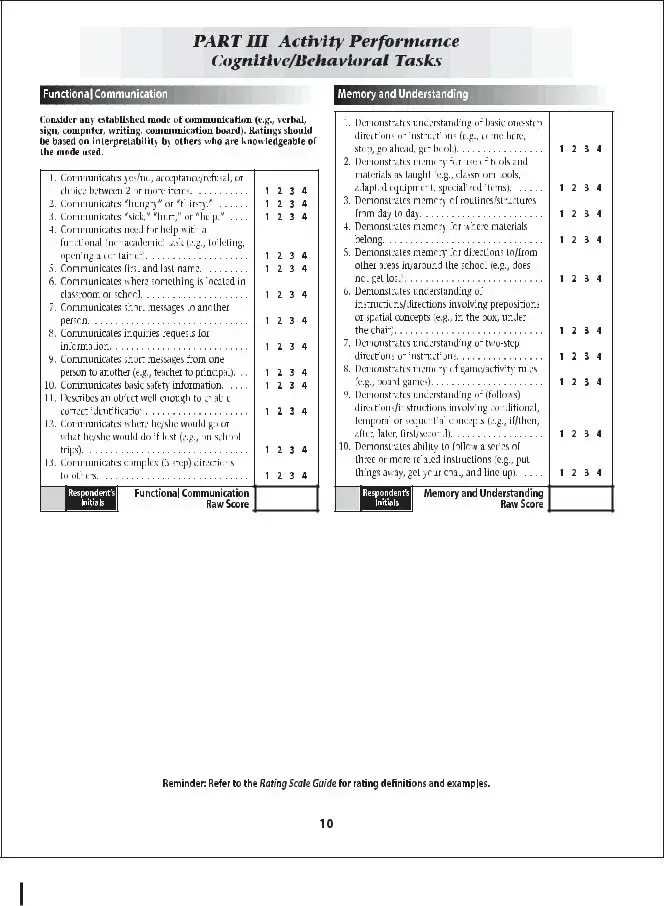What exactly is the School Function Assessment?
The School Function Assessment (SFA) is a tool used by educators and therapists to measure a student's performance of nonacademic activities at school. These encompass a range of tasks, from participating in class to moving around the school building. Its primary aim is to identify the student's strengths and areas where they might need support, providing a structured way to monitor progress over time.
Who should complete the School Function Assessment?
Typically, the SFA is filled out by a team that knows the student well. This group often includes teachers, school therapists (like occupational or physical therapists), and sometimes paraprofessionals. It's crucial that the respondents have a good understanding of the student's day-to-day activities and challenges within the school environment to accurately assess their functionality.
Can parents or guardians fill out the SFA?
While the direct completion of the SFA is generally done by the school team, input from parents or guardians is incredibly valuable. They can provide insights into the student's needs, strengths, and struggles that the school staff might not see. This information can be included in the assessment discussions or considered when the team is filling out the form.
What areas does the School Function Assessment cover?
The SFA evaluates a student across multiple dimensions, which include participation, task supports, and activity performance. These categories delve into aspects such as the student's ability to join in school and classroom activities, the need for physical or human support to complete tasks, and how well the student can perform specific activities that are crucial for school participation.
How often should the SFA be completed?
How often the SFA should be reassessed varies depending on the student's individual needs and the school's policies. It could be conducted annually to capture changes in the student's abilities and needs or more frequently if the student is undergoing a significant transition or their supports are being adjusted.
Is training required to administer the School Function Assessment?
While the SFA is designed to be user-friendly, having a solid understanding of its structure and the intent behind its scales and items can improve the accuracy and usefulness of the assessment. It is beneficial for professionals who are new to the SFA to go through training or in-depth review of the manual, ideally under the guidance of someone experienced with the assessment.
How does the SFA impact educational planning for students?
Results from the SFA can play a critical role in educational planning by highlighting the student's needs and abilities in nonacademic areas. This insight helps to inform Individualized Education Programs (IEPs) or 504 plans, ensuring that students receive appropriate support to participate fully in school. It can lead to adjustments in the physical environment, adaptations in teaching strategies, or the introduction of supportive technologies.
